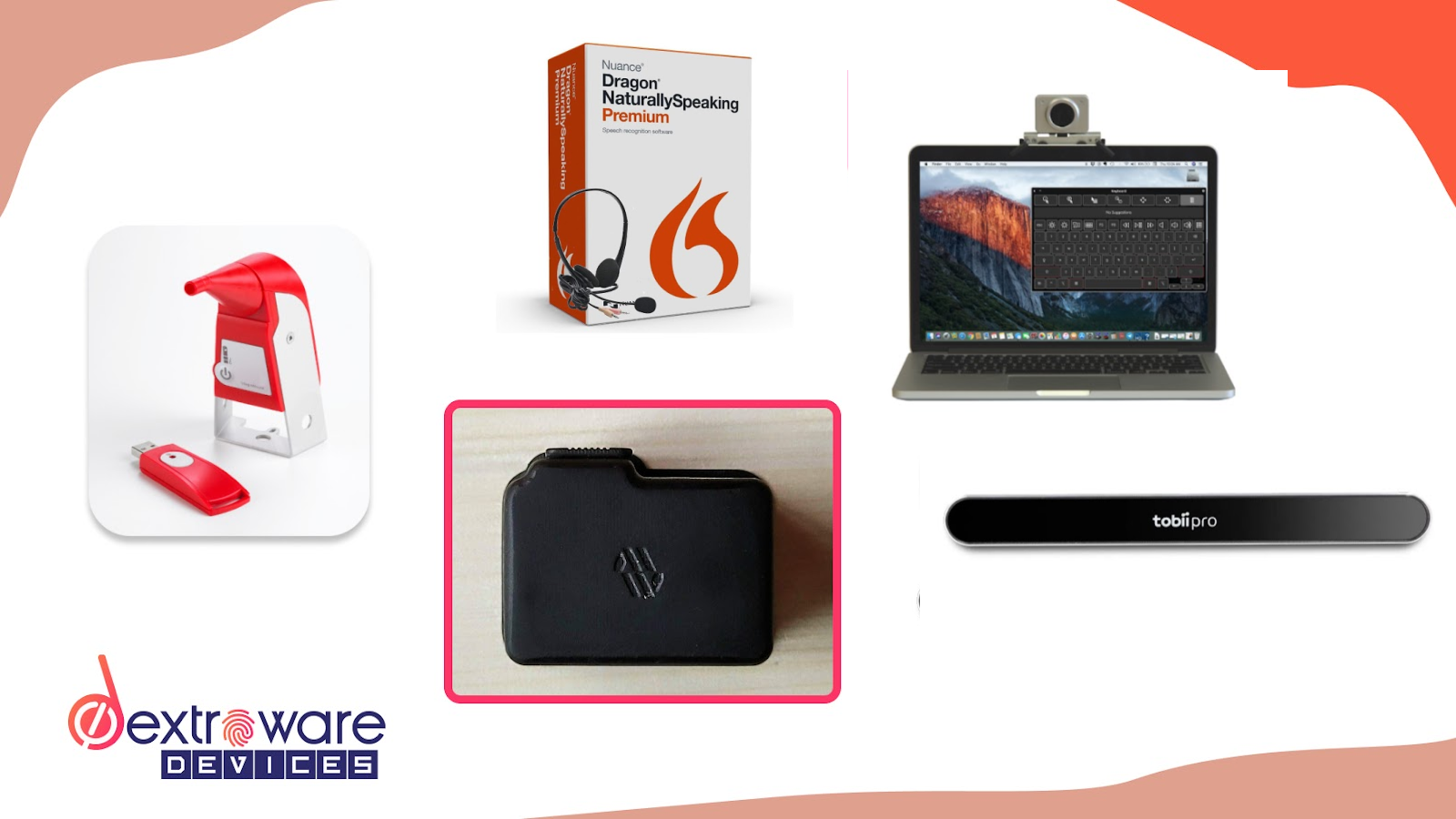
Navigating the digital world should be a seamless experience for everyone, regardless of physical challenges. For individuals who have experienced limb loss, finding the right tools to interact with technology can significantly enhance daily life and work productivity. In this article, we share the Top 5 Mice for Amputee, we'll explore a variety of innovative solutions that cater specifically to amputees, helping to break down barriers and open up a world of possibilities.
I once met Arun, a graphic designer and an amputee, who shared how finding the right mouse transformed his work routine. Initially struggling with standard equipment, Arun discovered a tailored mouse for amputees, which not only boosted his efficiency but also his morale, proving that the right tools can indeed rebuild independence and confidence.
As we dive into our top picks, remember, each device has been selected for its unique features, ease of use, and positive impact on its users. Let’s explore these life-changing devices that promise more than just functionality but a doorway to enhanced freedom and potential.
A mouse for amputees is a specialized device designed to help individuals who have lost one or more limbs, particularly upper limbs, to efficiently and effectively interact with computers. Unlike traditional mice, these devices are engineered with unique adaptations to accommodate the specific needs of amputees, ensuring that everyone can navigate digital spaces with ease.
These mice come in various forms, including foot-operated mice, head motion sensors, and eye-tracking systems, each offering different methods of control to suit various types of physical capabilities.
This innovative technology not only enhances accessibility but also ensures that amputees can continue to engage with technology for personal and professional use without limitation.
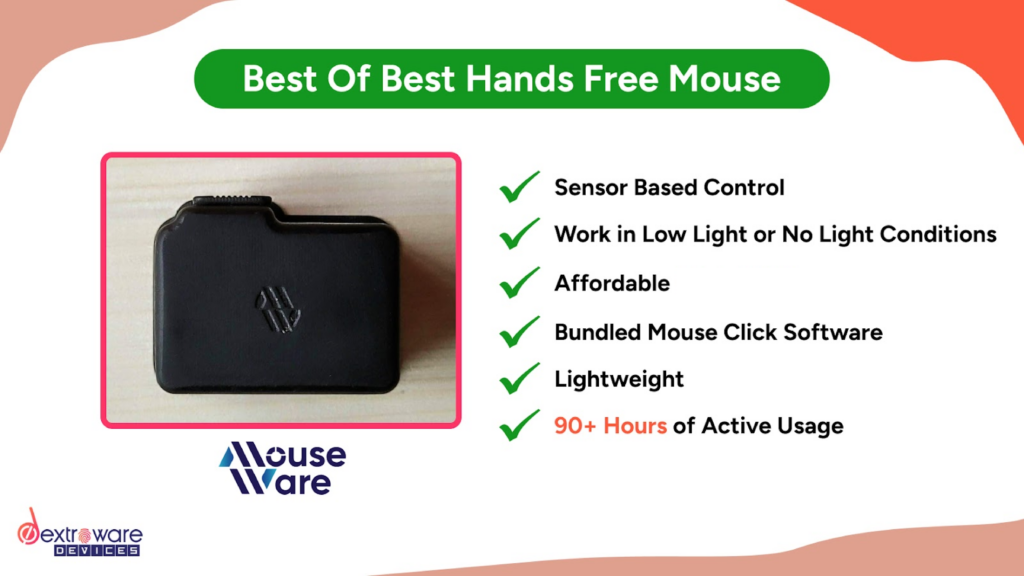
Mouseware by Dextroware Devices is the premier choice for amputees seeking an exceptional mouse solution.
This innovative head mounted device enables users to control computers and smart devices via head movements, voice commands, and customizable switches.
Beyond mere cursor control, Mouseware delivers an integrated, user-friendly experience, ensuring seamless operation across a variety of digital platforms.
Hands-free mice for represent a revolutionary step forward in assistive technology, particularly for amputees who face unique challenges in navigating digital environments.
These devices come in various forms, each tailored to meet different needs and preferences. Understanding these options can greatly enhance an amputee's ability to use technology independently and effectively.
Here’s a breakdown of the main types of hands-free mice suited for amputees:
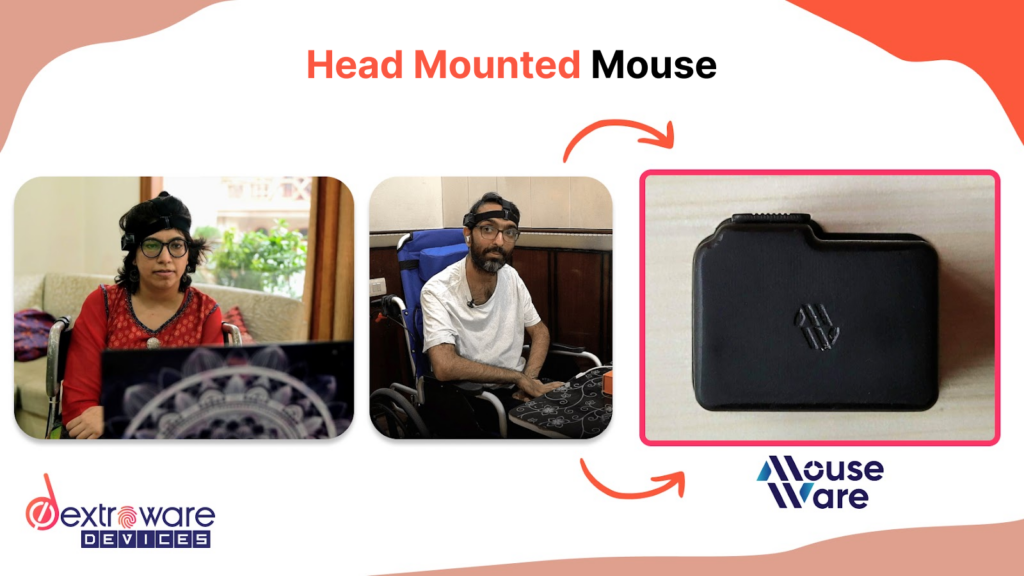
Wearable mice are often the go-to choice for amputees, providing a way to interact with computers through subtle movements other than hand gestures.
Devices like Mouseware track head movements, translating them into cursor movements on the screen. This technology not only allows for precise control but also offers customization to fit the user’s range of motion and comfort levels.
It’s an excellent choice for those who have good control over their head movements and need a responsive, intuitive way to navigate digital spaces.
Mouseware is an example of head mounted mouse that utilizes a head movement to cursor inputs. This is ideal for users who have good control over their head movements.Check out more about Mouseware and Some of their user stories to learn more.
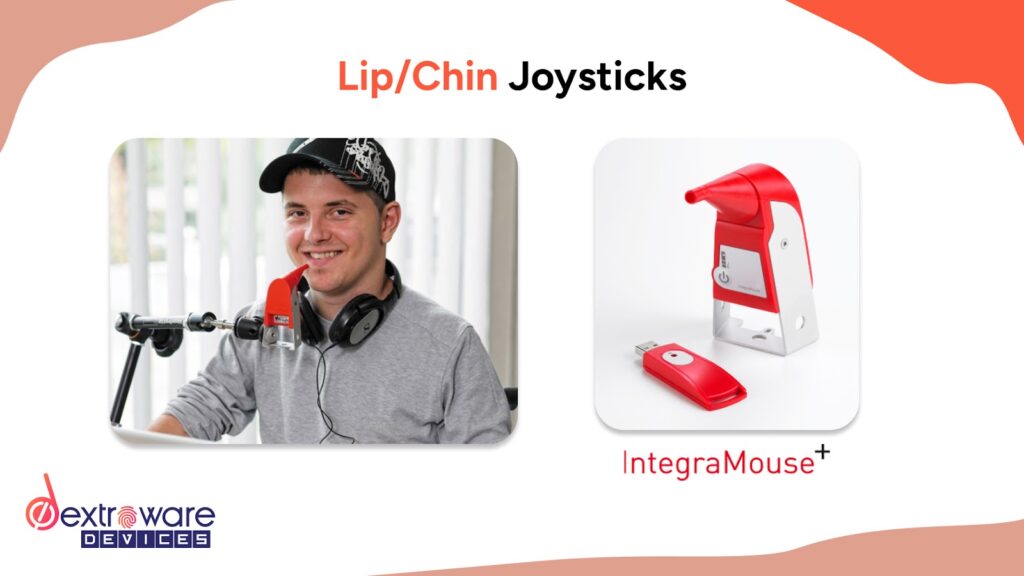
For amputees with mobility in their facial muscles, but limited or no use of their arms, lip and chin joysticks offer an effective solution.
These devices are mounted on adjustable arms that can be positioned comfortably in front of the user, who can then control the cursor through minimal lip or chin movements.
Tools like the IntegraMouse+ and QuadJoy are examples of this technology that provide not just basic mouse functionality but also additional features like sip-and-puff switches for clicking.
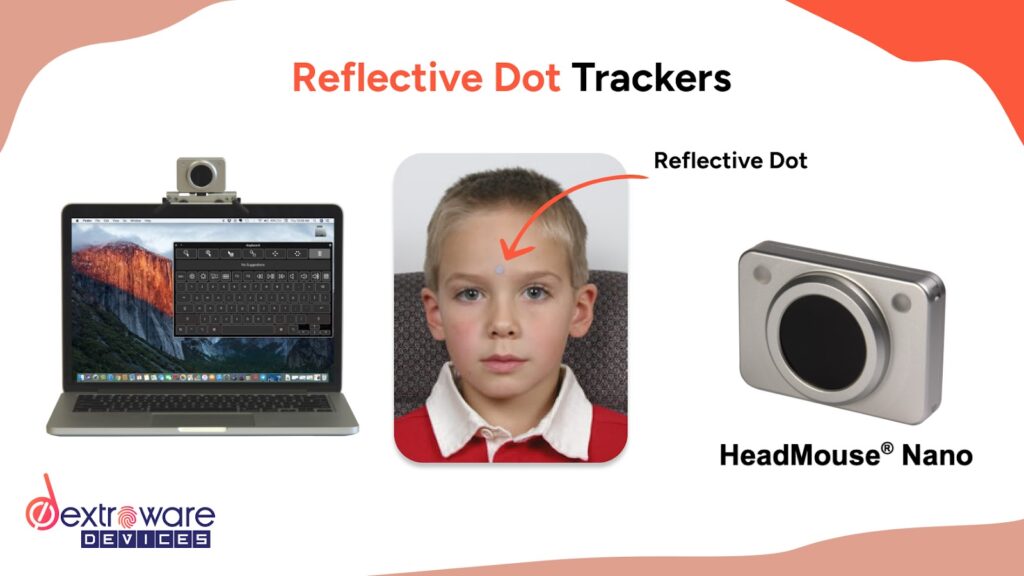
Reflective dot trackers use a camera to follow a small reflective dot placed on a part of the user’s body, typically the forehead or glasses, and translate this movement into cursor navigation.
This method is highly effective for individuals who can make small, controlled movements with their heads.
Devices like the TrackerPro 2 and HeadMouse Nano are celebrated for their precision and ease of use, making them suitable for a wide range of applications.
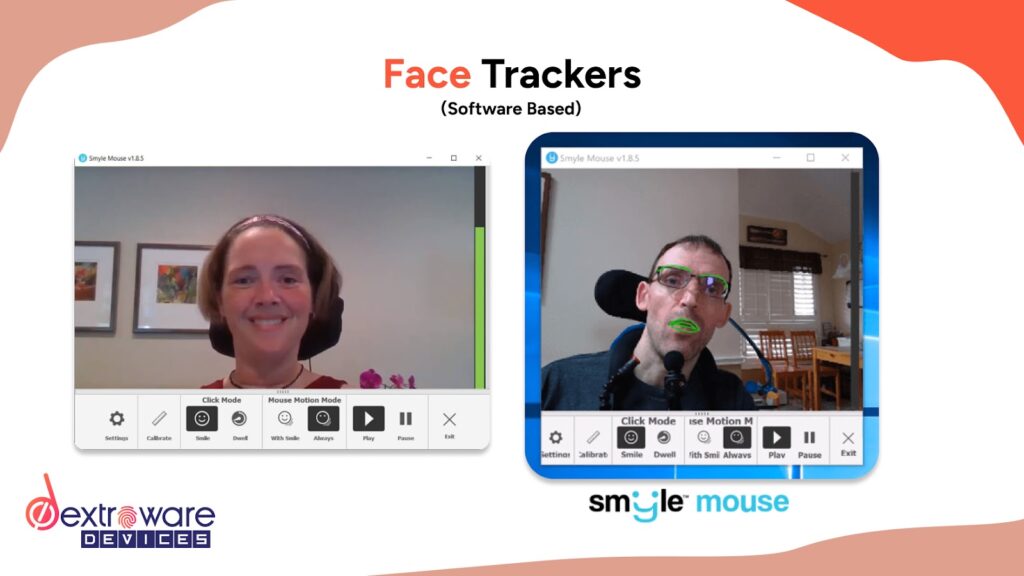
Tracking facial movements offers another hands-free way to control a mouse.
Systems like the Smyle Mouse use cameras to detect facial gestures, such as smiles or eyebrow raises, to execute commands.
This type of mouse is particularly useful for users who can control facial movements accurately and wish to interact with their devices in a more natural, intuitive way.
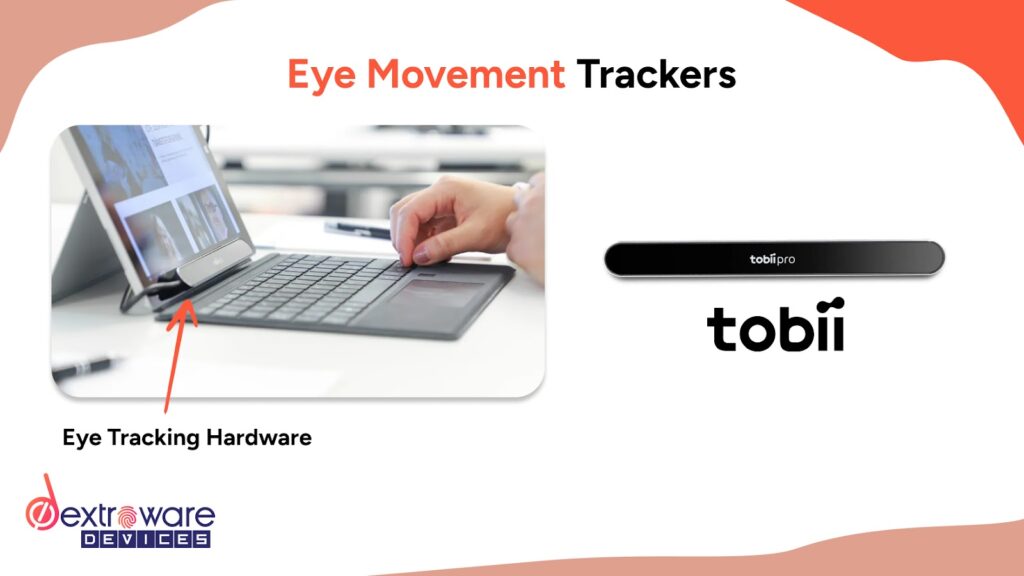
Eye movement trackers are at the cutting edge of hands-free mouse technology, offering the highest level of precision by tracking the user's gaze.
Devices like the Tobii 4C and PCEye Mini allow users to control the cursor just by looking at different parts of the screen, with clicking often enabled by blinking or staring.
These devices are ideal for users with very limited mobility who can still control eye movement.
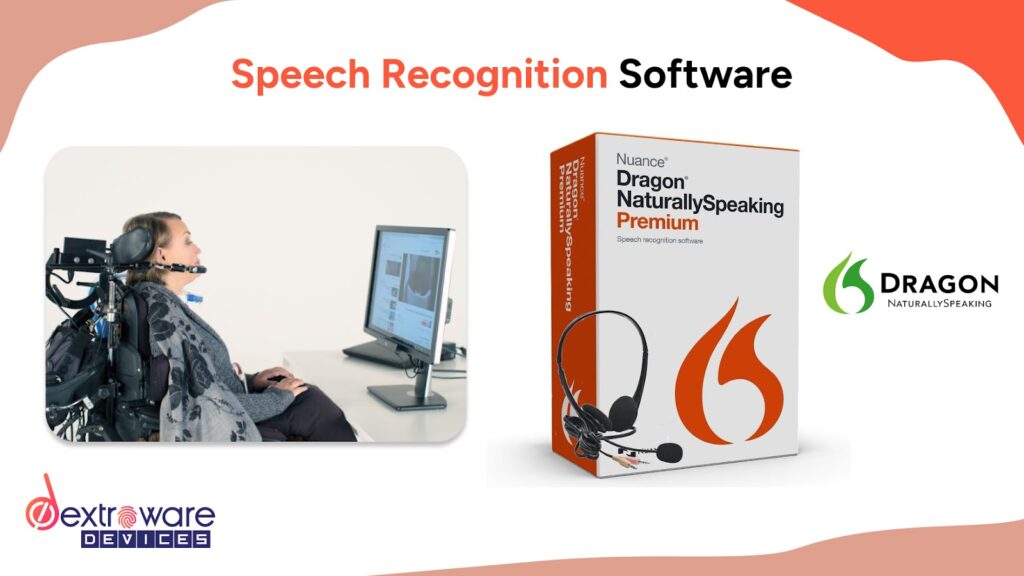
Speech recognition technology provides a completely hands-free experience by allowing users to execute commands and control the cursor through voice.
Systems like Dragon Naturally Speaking have been adapted to provide not just dictation capabilities but also the ability to navigate and control a computer efficiently. This type of control is indispensable for users who prefer verbal interaction and have clear speech capabilities.
Each of these devices has been designed with specific user needs in mind, focusing on providing a seamless and empowering experience for amputees.
By choosing the right type of hands-free mouse, amputees can regain control over their digital interactions, boost their productivity, and enjoy greater independence.
For amputees requiring exceptional ease and functionality, Mouseware emerges as the leading choice. This device offers a head-wearable design that perfectly aligns with the user's need for intuitive, straightforward computer interaction through mere head movements.
Its lightweight design and extensive compatibility across various operating systems like Windows, Mac, Linux, Android, and iOS ensure a seamless experience for all users.
Mouseware is designed for durability and comfort, enabling prolonged use without strain, and its customizable settings allow for a personalized user experience.
The IntegraMouse+ is celebrated for its innovative design that incorporates wireless technology and built-in sip-and-puff switches, catering specifically to users with significant upper-body mobility restrictions.
This device offers unparalleled control via minimal facial movements, enhancing accessibility and independence for its users.
The IntegraMouse+ is particularly noted for its precise cursor control and its ability to integrate smoothly with various platforms, making it a revolutionary tool in the hands-free mouse market.
The HeadMouse Nano stands out with its wireless setup and precise tracking capabilities, making it an ideal choice for users who prefer a device that is both wearable and highly responsive.
This mouse functions flawlessly with any software that supports mouse input, offering flexibility across different devices and platforms.
Its wireless technology enhances user mobility, allowing for more natural interaction with technology without the physical constraints of traditional mouse devices.
The Smyle Mouse offers a unique approach by utilizing webcam technology to translate facial movements into cursor controls.
This software-based solution is perfect for individuals who can control facial gestures and need an easy setup without additional hardware.
The Smyle Mouse is not just functional but also empowering, as it allows users to navigate their computers with simple facial expressions, promoting independence and enhancing productivity.
The Tobii Tracker 4C provides a high-quality eye-tracking experience at an affordable price, making advanced technology accessible to more users.
Although not primarily marketed as an assistive device, its performance and features offer significant benefits for users with mobility restrictions.
The Tracker 4C includes the EyeChip, which processes data efficiently, reducing the load on the computer and ensuring smooth operation across various systems.
Dragon Naturally Speaking stands as the top choice for users who prefer voice control over physical interaction.
This system allows comprehensive control over the computer, enabling users to navigate, access applications, and manage communications purely through voice commands.
It is particularly suited for users with excellent vocal capabilities but limited physical mobility, offering a way to maintain productivity and connectivity.
The selection of the right mouse for amputees depends heavily on the individual's specific needs and abilities.
Our guide has explored various options that cater to different types of physical limitations, ensuring that every user can find a device that enhances their interaction with technology.
Our top picks in each category, such as the IntegraMouse+ for lip/chin joysticks and Mouseware for wearable hands-free mouse, are based on their features, functionality, compatibility, and user reviews from around the world.